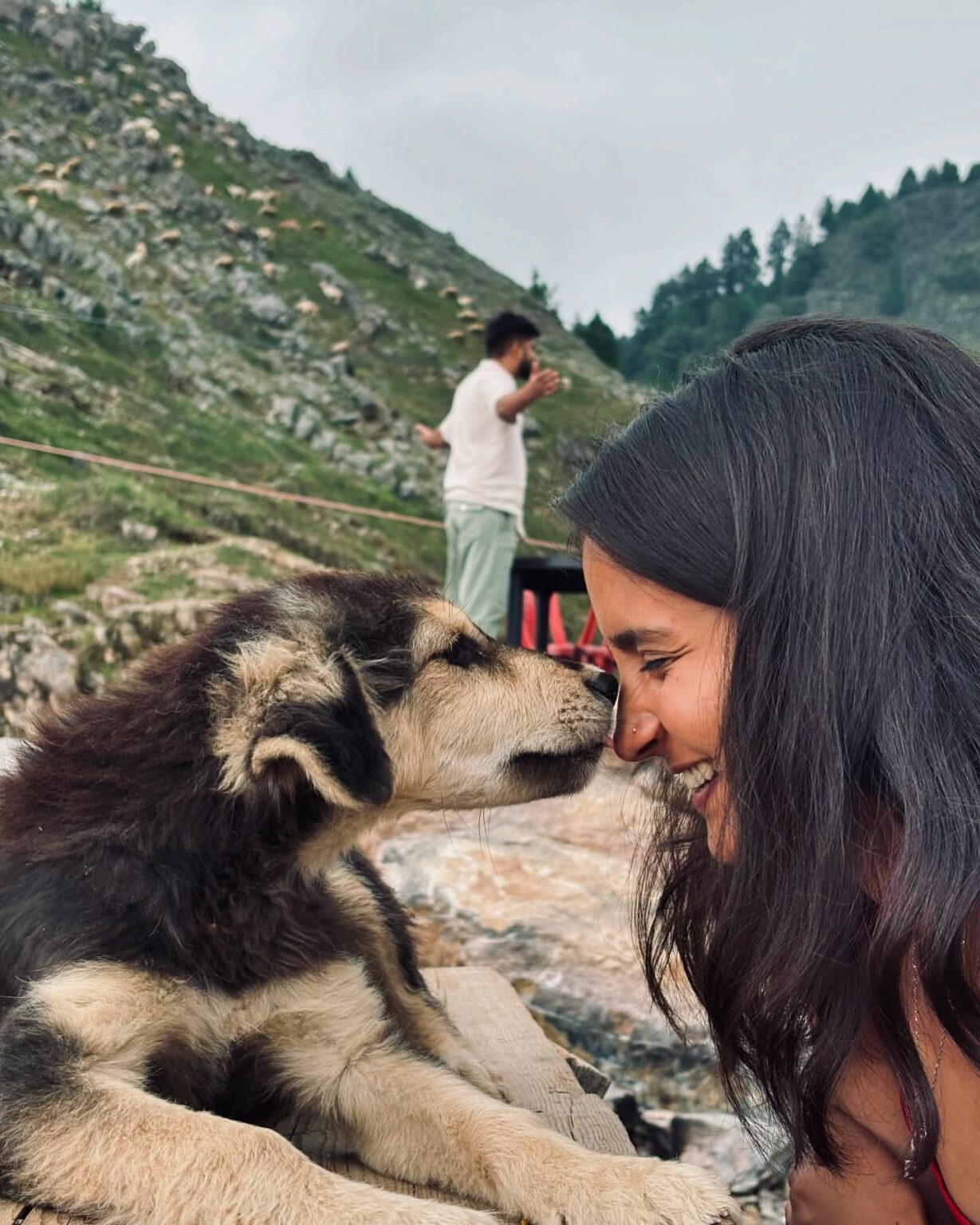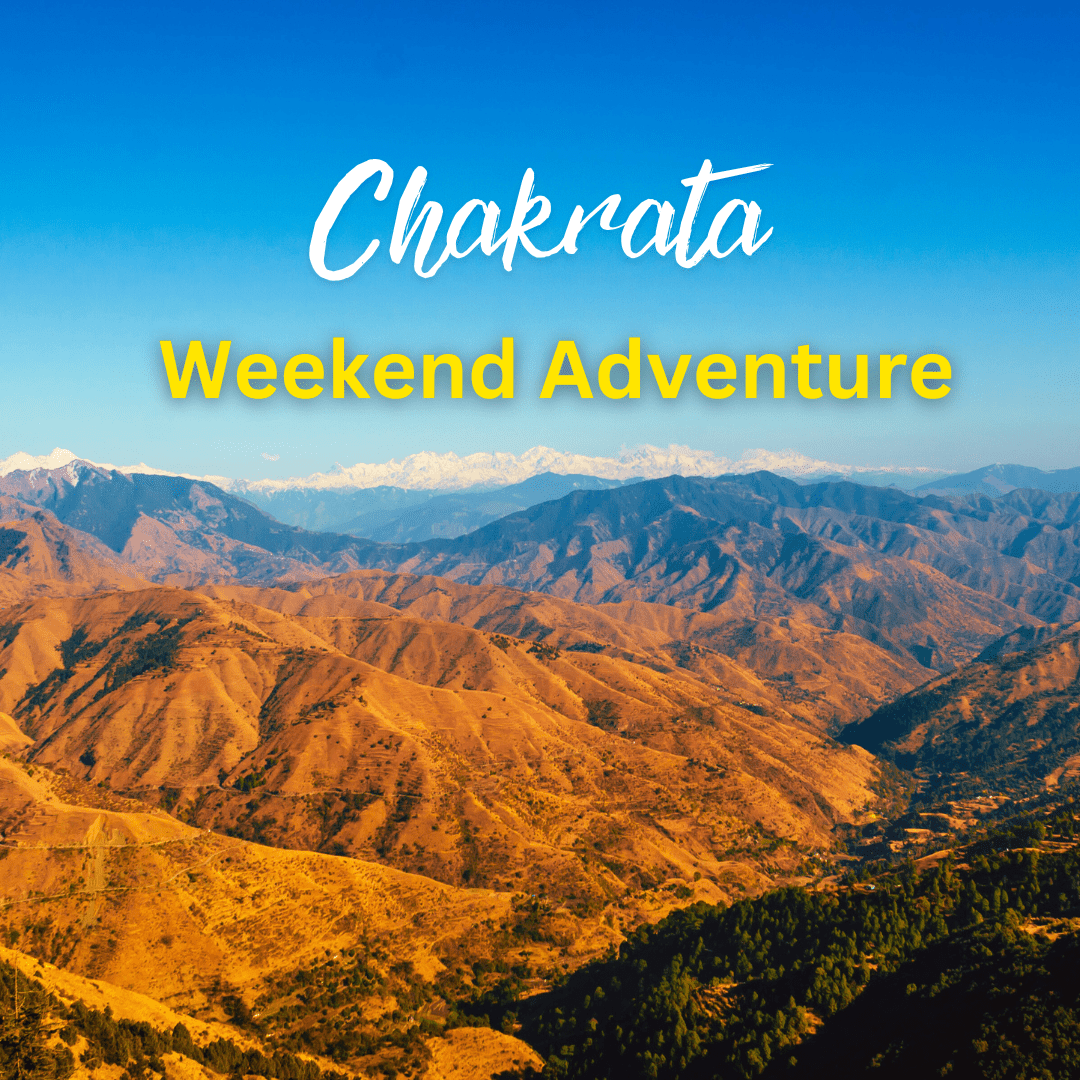Experience the Magic of Winter on the Chopta Tungnath Trek
Published on December 16, 2024
Winter brings out a magical charm in Chopta, the unspoiled gem of Uttarakhand. Known for its breathtaking beauty, Chopta is often referred to as the ‘Mini Switzerland of India,’ but it is its winter allure that truly enchants trekkers. With snow-capped peaks, frozen landscapes, and a serene, almost otherworldly atmosphere, the Chopta Tour Package in winter offers an adventure like no other.
Top Reasons to Choose Winter for Your Chopta Tungnath Trek Adventure
Winter transforms the Chopta Tungnath Trek into something truly magical. Here's why:
-
Snow-Covered Scenery: During winter, the entire region is blanketed in a pristine layer of snow. The tall trees, rocky terrains, and expansive meadows are covered in a white quilt, creating a stunning landscape. For trekking enthusiasts, the sight of snow-covered trails, frozen lakes, and crystal-clear skies makes the journey more spectacular.
-
Tranquil Ambiance: Winter is the off-season for many tourists, and this makes Chopta a peaceful retreat. The serene atmosphere allows trekkers to enjoy the tranquility of nature without the distractions of crowded trails.
-
Perfect Trekking Conditions: The cool, crisp air during winter enhances the trekking experience. You won’t be battling the intense summer heat, and the fresh, chilly air invigorates the senses as you ascend to higher altitudes. Snow trekking, with the right gear, is an invigorating challenge, offering the perfect conditions for trekkers who enjoy an adventurous twist.
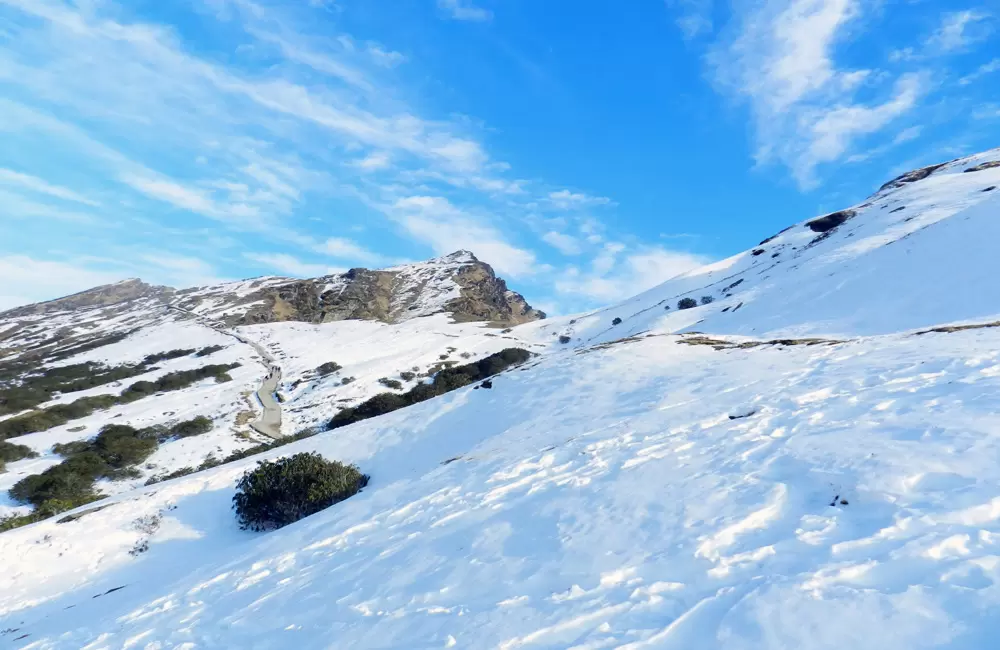
Winter treks in the Himalayas offer an exhilarating experience, and Chopta is one of the most popular destinations for trekkers seeking an unforgettable winter adventure. Whether you are an experienced trekker or someone looking to explore the beauty of the snowy peaks, choosing a Chopta tour package for your winter trek is a decision that ensures a hassle-free, safe, and enriching experience.
Here are the top reasons why opting for a Chopta tour package for your Chopta Tungnath Trek, Chandrashila Trek, and other winter adventures is the best choice.
1. Convenience and Stress-Free Planning
One of the main advantages of choosing a Chopta tour package is the convenience it offers. Winter treks require careful planning, especially in the rugged and snow-covered terrain of Chopta. With a package, all the logistics, from transportation to accommodation, are taken care of, allowing you to focus solely on your trek.
-
Transportation from Delhi: Most Chopta tour packages offer transportation from Delhi, ensuring you don’t have to worry about navigating the routes in harsh winter conditions. Whether you’re traveling solo or in a group, a package ensures a comfortable ride to and from Chopta, avoiding the stress of long, tiring journeys.
-
Guided Trekking Experience: The Chopta Tungnath Trek and Chandrashila Trek can be tricky, especially in winter with snow-covered trails and cold weather. A package often includes an experienced guide who knows the terrain, ensuring safety and helping you navigate the tricky paths.
-
Accommodation Included: Winter treks require comfortable and safe places to stay. The Chopta tour package usually includes well-located and cozy accommodations, such as guesthouses, campsites, or homestays, equipped to keep you warm during the cold nights.

2. Expert Guides Ensure Safety
When trekking in winter, safety becomes a primary concern due to the challenging terrain and harsh weather conditions. The Chopta Tungnath Trek and Chandrashila Summit Trek are at altitudes where snow can quickly turn trails slippery, making experienced guides invaluable. With a Chopta tour package, you benefit from the expertise of local guides who know the best routes, how to manage the varying conditions, and how to handle unexpected challenges during your trek.
-
Knowledge of Local Terrain: Guides are trained to navigate the snow-covered paths and can take you through alternate routes if needed, depending on the weather. Their knowledge of the region’s conditions ensures that your trek remains safe and enjoyable.
-
Emergency Assistance: In case of any unforeseen circumstances, having an experienced guide is a big advantage. Whether it's managing altitude sickness or offering first aid, guides are trained to ensure your safety during the Chopta Chandrashila Trek.
3. Customized Packages to Suit Your Needs
The beauty of Chopta tour packages is their flexibility. Whether you are looking for a basic trek or a more luxurious experience, these packages can be tailored to suit your specific preferences.
-
Variety of Options: Packages are available for different trekking experiences, from budget-friendly options to luxury treks. For instance, if you are looking for a Chopta Tungnath Trek from Delhi, you can find packages that include transportation, accommodation, meals, and guided tours at an affordable price. Alternatively, luxury packages offer premium services, like boutique stays, gourmet meals, and private guides.
-
Group and Solo Options: Many trekkers prefer to join group treks for camaraderie and safety, especially when trekking in winter. Chopta tour packages cater to both solo trekkers and groups, ensuring that your trek matches your desired level of comfort and experience.
-
Seasonal Offers: Winter is one of the best times to visit Chopta, and many tour operators offer special seasonal packages with discounts, making it an excellent time to book your Chopta Tungnath Trek or Chandrashila trek.
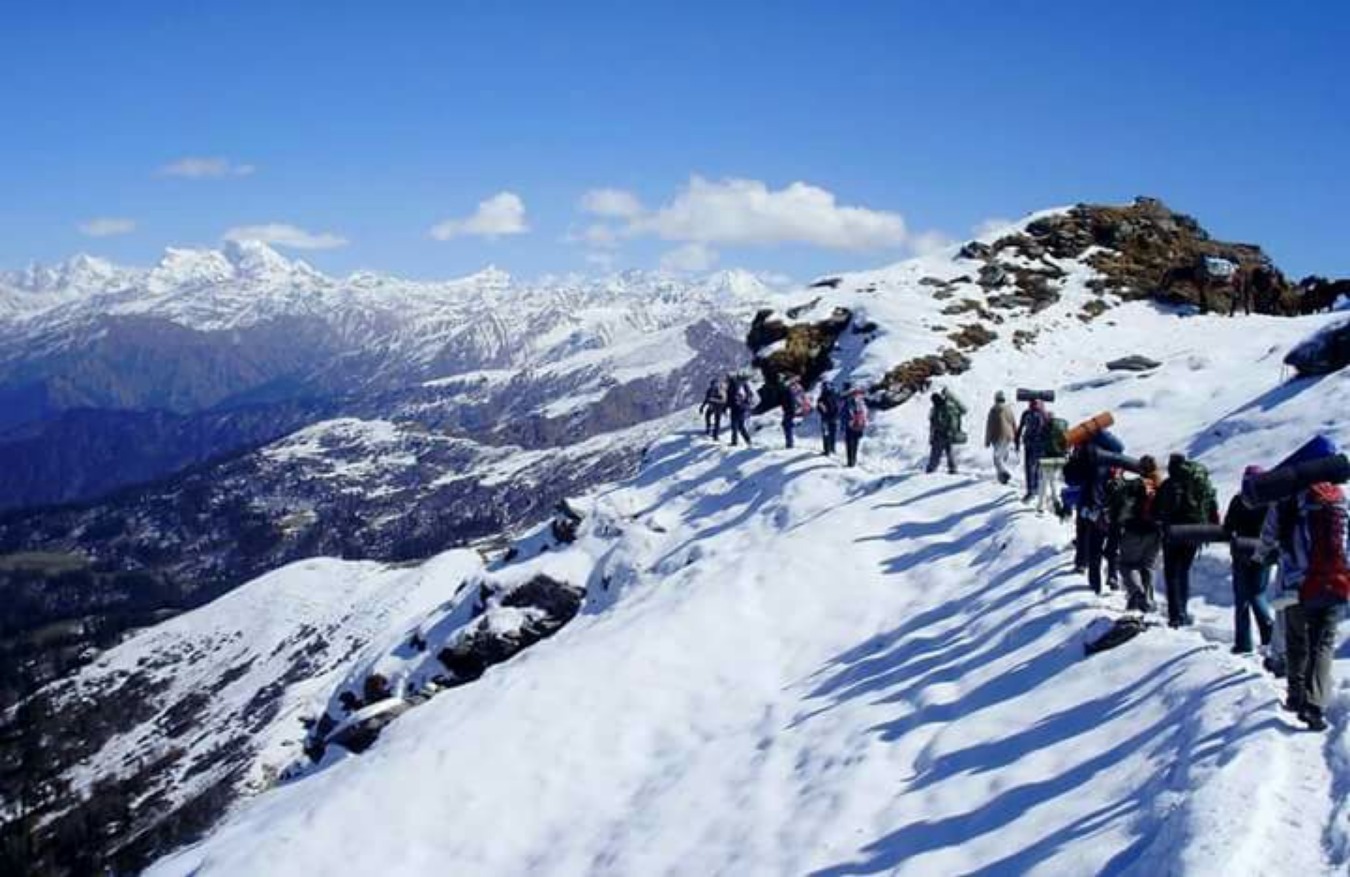
4. Exploration of Iconic Landmarks
The Chopta Tungnath Trek and Chandrashila Summit Trek take you to some of the most iconic landmarks in the region. Choosing a Chopta tour package allows you to explore these fascinating spots with ease and without the worry of missing out on must-see locations.
-
Tungnath Temple: The trek to Tungnath Temple, one of the highest temples in the world, is a highlight of the winter journey. Covered in snow during winter, the temple looks mystical against the backdrop of snow-capped peaks. A Chopta tour package ensures you don’t miss this sacred destination and provides insights into the historical and spiritual significance of the temple.
-
Chandrashila Summit: The Chandrashila Summit trek takes you to an altitude of 4,000 meters, offering panoramic views of the Himalayan peaks like Nanda Devi, Trishul, and Chaukhamba. A Chopta tour package ensures that you have enough time to enjoy these breathtaking vistas and immerse yourself in the natural beauty of the region.
-
Deoria Tal: If you’re looking for a picturesque and serene spot, Deoria Tal, a high-altitude lake surrounded by dense forests, is a must-visit during your Chopta adventure. Some Chopta tour packages include a visit to Deoria Tal, ensuring you get a well-rounded experience of the Chopta region.
5. Cost-Effectiveness
While planning a winter trek, especially to a remote location like Chopta, the costs of transportation, accommodation, and meals can add up quickly. However, booking a Chopta tour package can save you money in the long run. The packages often come with group discounts and inclusive costs for transportation, meals, and accommodation, offering significant savings compared to booking everything separately.
-
Group Discounts: If you choose to travel in a group, you can take advantage of group discounts that many tour operators offer for Chopta tour packages. This can help reduce the overall cost of the trek.
-
Inclusive Pricing: A single fee that includes transportation, meals, accommodation, and guide services ensures there are no surprise costs along the way. It helps you stay within your budget and manage your expenses better during the trek.
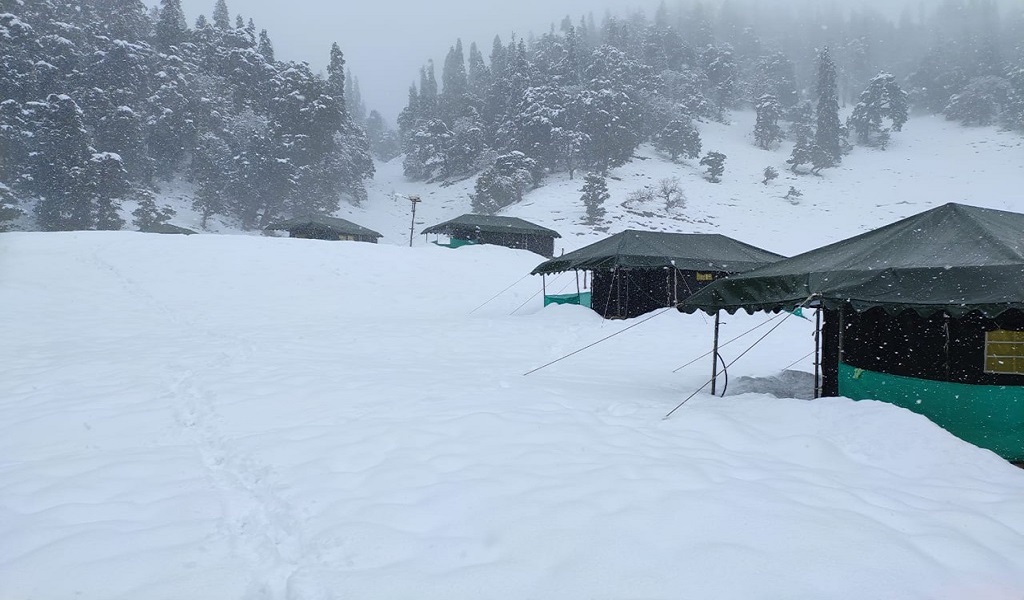
6. Time-Saving and Stress-Free Experience
Winter treks can be challenging in terms of time management, with shorter days and the possibility of difficult weather. A Chopta tour package takes the stress out of time management, allowing you to make the most of your trekking days.
-
Well-Organized Itinerary: Chopta tour packages come with well-organized itineraries that maximize your time on the trail. This includes rest stops, acclimatization, and key treks, allowing you to experience everything at a comfortable pace.
-
Emergency Support: Having a tour operator ensures that you have access to emergency support. If the weather conditions turn unfavorable or you encounter health issues, the operator is well-equipped to assist you in safely returning to base.
-
No Need for Complex Planning: Trekking in winter requires additional planning for clothing, food, and accommodation. When you book a Chopta tour package, you bypass the hassle of individually researching these aspects, which can be especially time-consuming and stressful in winter.
7. Experience the Magic of Winter in the Himalayas
Winter transforms the Chopta region into a magical white paradise. Snow-covered peaks, frozen lakes, and the quiet serenity of the mountains create an atmosphere that is both peaceful and awe-inspiring. A Chopta tour package allows you to immerse yourself in this winter wonderland without the worry of dealing with the logistics of the journey.
-
Snow-Covered Landscape: Winter brings a magical transformation to the Chopta Tungnath Trek and Chandrashila Trek, where the entire region is blanketed in snow. The beauty of trekking through pristine white landscapes is one of the most cherished aspects of winter trekking in Chopta.
-
Frozen Waterfalls and Lakes: The winter trek offers the rare opportunity to see waterfalls and lakes frozen in time, adding a unique charm to the Chopta Chandrashila Trek. The frozen surface of Deoria Tal, in particular, offers a stunning contrast to the snowy forests surrounding it.
-
Stargazing in Winter: Winter nights in Chopta offer some of the clearest skies for stargazing. Away from the light pollution of the cities, Chopta offers an exceptional opportunity to experience the stars like never before.
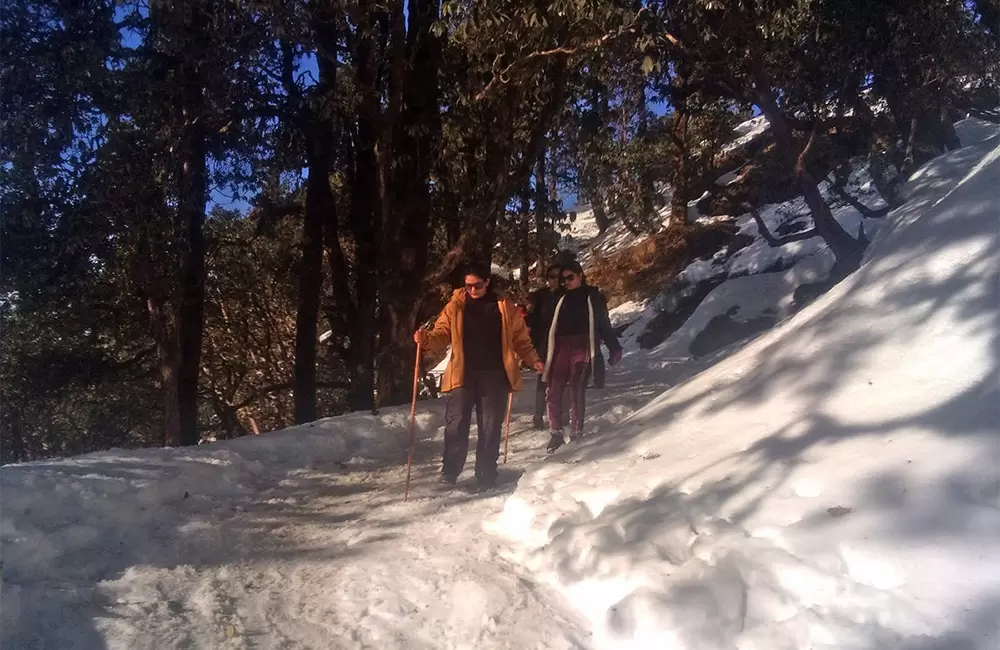
Chopta Tungnath Trek: A Winter Wonderland
Embarking on the Chopta Tungnath Trek during winter is an adventure that you’ll remember for a lifetime. This trek, which leads to the Tungnath Temple and continues towards the Chandrashila summit, is an epic journey through the untouched beauty of the Himalayas.
The Terrain and Views
As you start your trek, you’ll walk through lush pine forests, which in winter, look even more enchanting with snowflakes gently hanging from branches. The trail is challenging but rewarding, with views that change at every turn. The rugged terrain leads you through alpine meadows, where the snow deepens as you climb higher.
Tungnath Temple
Tungnath, the highest Shiva temple in the world, stands proudly amidst the snow. In winter, it looks mystical, with its ancient stone structure rising against the backdrop of white peaks. Reaching this temple during winter is a spiritual experience—imagine the serenity as you stand at this holy site, surrounded by the majestic snow-clad Himalayas.
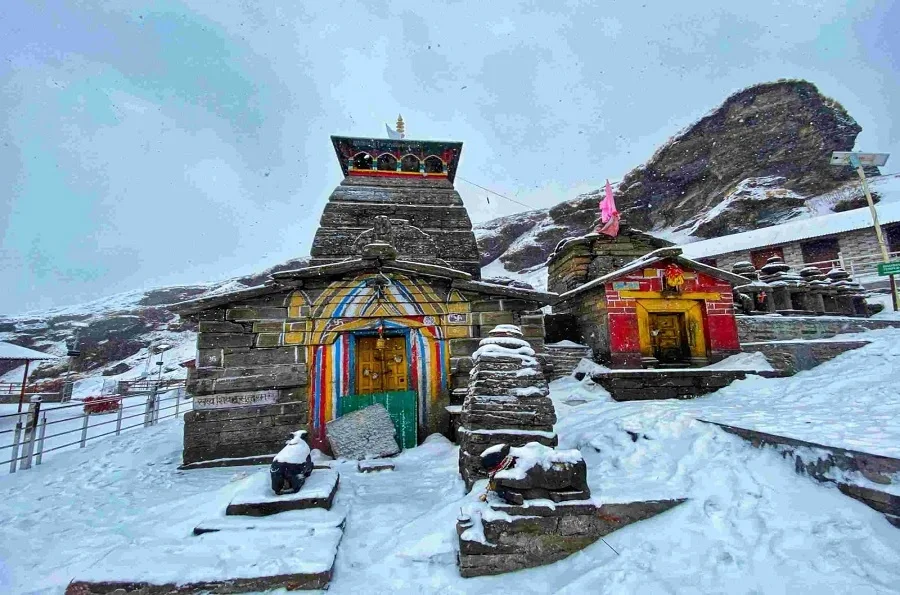
Chandrashila Summit
The trek doesn't stop at Tungnath. From here, you can continue on to Chandrashila Summit, which offers one of the most rewarding panoramic views of the Himalayan peaks, including Nanda Devi, Trishul, and Chaukhamba. The summit is a photographer's paradise, with the winter sun casting golden hues over the snowy landscape. The crisp mountain air, combined with the beauty of the frozen world, makes the journey truly mesmerizing.
The Significance of Tungnath Temple and Chandrashila Summit
The Tungnath Temple Trek is not just about the adventure—it’s also about the rich history and spiritual significance of the site. The Tungnath Temple, dedicated to Lord Shiva, is one of the five Panch Kedar temples. It is believed to be over a thousand years old and holds immense religious importance for Hindus. Reaching the temple, particularly in winter when it’s surrounded by snow, feels like a divine experience.
-
Tungnath Temple: The temple itself is ancient and built in traditional stone architecture, reflecting the cultural heritage of the region. Pilgrims often visit Tungnath to offer prayers, making it an important pilgrimage site for devotees of Lord Shiva.
-
Chandrashila Summit: The Chandrashila peak, located at an altitude of 4,000 meters, has an equally significant place in Hindu mythology. It is believed that Lord Rama meditated here after defeating Ravana, and the place is considered sacred.
Chopta Tungnath Trek from Delhi: A Seamless Winter Journey
For those traveling from Delhi, getting to Chopta has never been easier. The Chopta Tungnath Trek from Delhi is a straightforward journey that takes you through scenic routes and offers plenty of opportunities to relax before you hit the trail.
-
Transportation: Several travel agencies offer packages that include transportation from Delhi to Chopta. Most of the time, a comfortable overnight bus or a private vehicle is available, so you can rest during the journey and be ready for the trek once you arrive in Chopta.
-
Connectivity: Delhi is well connected to Uttarakhand by road, and many Chopta Tour Packages cater specifically to those coming from the capital. Whether by bus or car, the journey is easy and quick, allowing you to focus on the adventure ahead.
-
Distance: The distance from Delhi to Chopta is about 450 kilometers, and the journey takes around 10-12 hours by road, which is manageable and comfortable for most travelers..

The Adventure of Chandrashila Trek in Winter
Once you reach Tungnath, the adventure doesn’t stop. Chandrashila Trek offers an additional challenge that is well worth the effort. Here’s why it’s the highlight of your winter journey:
-
Challenging yet Rewarding: The Chandrashila summit is about 1.5 kilometers from Tungnath. In winter, the snow makes the trek challenging, but it also adds to the thrill. You’ll encounter frozen streams, snow-covered trails, and stunning views as you climb higher.
-
Panoramic Views: The summit offers panoramic views of some of the tallest peaks in the Indian Himalayas, including Nanda Devi, Trishul, and Chaukhamba. The snow reflects the sunlight, making it one of the most beautiful sights in the region.
-
Unbeatable Adventure: As you ascend to the summit, the difficulty level increases. The winter conditions make it a bit more challenging, but with the right gear and preparation, the rewards are unforgettable. Reaching the top in winter, when the world around you is frozen, feels like an accomplishment.
What to Pack for the Winter Chopta Tungnath Trek
Packing smart is crucial for a comfortable and safe winter trek. Here’s what you should bring:
- Warm Clothing: Layering is key in the cold. Bring thermal wear, fleece jackets, a down jacket, and warm gloves.
- Trekking Shoes: Make sure your trekking shoes are waterproof and insulated for snow trekking.
- Trekking Poles: These will provide stability as you navigate the snowy and sometimes slippery trails.
- Headgear: A good-quality woolen hat, scarf, and sunglasses to protect your head and eyes from the cold.
- Hydration and Snacks: Stay hydrated with water bottles, and carry energy snacks like nuts, granola bars, and dried fruits.
- First Aid Kit: Always carry a basic first aid kit with essentials like band-aids, antiseptic wipes, and any necessary personal medications.

Tips for a Safe and Enjoyable Winter Trek
Winter treks in the Himalayas are an exhilarating experience, but they come with their own set of challenges. The Chopta Tungnath Trek, in particular, offers trekkers the chance to witness a snow-covered wonderland with panoramic views of the Himalayan peaks. However, before embarking on this adventure, it's essential to prepare properly to ensure a safe and enjoyable journey. Here are some tips to make the most of your winter trek while keeping safety as your top priority.
1. Prepare for the Cold
Winter trekking involves cold temperatures, and Chopta Tungnath Trek is no exception. The trek passes through high-altitude terrain, where snow can often make the trails slippery, and temperatures can drop significantly.
-
Layer Your Clothing: Layering is crucial to stay warm. Start with a moisture-wicking base layer, followed by an insulating mid-layer (like fleece or down), and finish with a waterproof and windproof outer layer. Don’t forget warm gloves, a woolen hat, and thermal socks.
-
Invest in Insulated Gear: Good-quality insulated jackets, boots, and gloves are essential. Make sure your shoes are waterproof and designed for trekking in snow. Trekking shoes with good grip and insulation will keep your feet warm and dry during the Chopta Tungnath Trek.
-
Avoid Cotton Clothing: Cotton traps moisture and can lead to cold and discomfort. Instead, choose synthetic or woolen fabrics, which keep you warm even when wet.

2. Pack Smart for the Trek
Packing the right gear is essential for your safety and comfort during the Chopta Tungnath Trek from Delhi or anywhere else. Here's a list of essential items to pack for the winter trek:
-
Waterproof Backpack: A durable and waterproof backpack will protect your gear from the snow and rain. It should be large enough to carry your essentials but not so big that it weighs you down.
-
Hydration and Snacks: Even in winter, it’s important to stay hydrated. Carry a thermos of warm water or a hydration bladder. Additionally, carry high-energy snacks like energy bars, dry fruits, nuts, and chocolate to keep you fueled on the trail.
-
Trekking Poles: Trekking poles provide stability, especially on snow-covered paths. They help you maintain your balance and reduce the strain on your knees and joints during the Chopta Chandrashila Trek.
-
First Aid Kit: Always carry a basic first aid kit that includes band-aids, antiseptic, painkillers, and any personal medication you may need. Altitude sickness medications might also be necessary, especially for higher altitude treks like the Chandrashila Summit Trek.
-
Headlamp and Extra Batteries: In winter, days are shorter, and you might find yourself trekking in low light. Carry a headlamp and extra batteries to ensure you're always prepared.
3. Acclimatize to the Altitude
The Tungnath Chandrashila Trek from Delhi to the highest temple in the world requires adequate acclimatization, especially when trekking in winter. Altitudes above 3,000 meters can cause altitude sickness, so take precautions to avoid it.
-
Take It Slow: As you start the trek, don’t rush. Give your body time to adjust to the higher altitude. Avoid overexertion, and pace yourself. Slow and steady is the key to acclimatization.
-
Rest at Key Points: Once you reach Tungnath Temple Trek, it’s essential to rest and hydrate before continuing to Chandrashila Summit. This helps your body adjust better and ensures you're prepared for the final stretch.
-
Drink Water Regularly: Staying hydrated helps combat the symptoms of altitude sickness. Even in the cold, dehydration can happen quickly, so make sure to drink water throughout your trek.

4. Understand the Weather and Conditions
Winter weather can be unpredictable, especially in the mountains. It's crucial to monitor the weather conditions before embarking on the Chopta Tungnath Trek.
-
Check the Weather Forecast: Always check the forecast a few days before your trek. Ensure you’re aware of any potential storms or extreme conditions that could impact your trek.
-
Be Prepared for Sudden Weather Changes: Mountain weather can change quickly. Always be prepared for snow, rain, or extreme cold, even if the forecast predicts clear skies. Pack extra layers and waterproof gear in case the weather turns.
-
Know When to Turn Back: If the weather becomes too severe or conditions become dangerous, it’s crucial to turn back. No summit is worth risking your safety. The Chopta Chandrashila Trek offers a challenging ascent, but if conditions worsen, it’s important to prioritize your well-being.
5. Hire a Guide and Join a Group
While it is possible to do the Chopta Tungnath Trek on your own, hiring a local guide is highly recommended, especially in winter when conditions can be tricky.
-
Local Expertise: A guide knows the best routes, how to navigate difficult terrain, and can help you avoid potential dangers. They also know the region’s weather patterns, which will make your trek safer.
-
Group Trekking: Winter trekking is often more enjoyable and safer when done in a group. Trekking with others gives you added support, motivation, and security. Many Chopta tour packages include group treks, ensuring you’re surrounded by fellow trekkers and expert guides.
-
Safety in Numbers: If you're trekking from Delhi, joining a group is especially beneficial. A group trek ensures there are more people around in case of emergencies, and the collective knowledge of the group will help you navigate the harsh winter conditions with ease.

6. Understand the Terrain
The Chopta Chandrashila Trek from Delhi to Tungnath Temple and beyond requires understanding the terrain and preparing accordingly. The trail is generally well-marked but can be challenging in winter due to snow and ice.
-
Know the Terrain: The trek to Tungnath involves both steep and gradual inclines. The final push to Chandrashila Summit is steep and requires physical endurance. In winter, snow and ice can make the terrain even more challenging, so be ready for slippery sections and take extra care when navigating these areas.
-
Trekking Skills: If you're new to winter trekking, it’s helpful to learn some basic skills, like using trekking poles effectively, walking in deep snow, and recognizing signs of exhaustion or hypothermia.
-
Follow the Marked Path: In winter, snow can sometimes obscure the trail, so make sure to stay on marked paths. Avoid taking shortcuts or straying from the trail, as it can lead to getting lost in harsh weather conditions.
Stay Safe from Hypothermia and Frostbite
Chopta, nestled in the heart of Uttarakhand’s Himalayas, is a dream destination for trekkers, adventurers, and nature lovers. Its snow-covered trails, dense forests, and majestic peaks make it an enchanting place to explore, especially during winter. However, trekking in cold weather comes with its own set of challenges, particularly the risks of hypothermia and frostbite. These conditions can turn a thrilling adventure into a dangerous situation if not managed properly. To ensure your trip to Chopta remains safe and enjoyable, here’s everything you need to know about staying safe from hypothermia and frostbite.
What Are Hypothermia and Frostbite?
Before diving into prevention tips, let’s understand what these conditions are and why they occur:
-
Hypothermia
Hypothermia happens when your body loses heat faster than it can produce it, causing your core body temperature to drop below normal levels (below 35°C or 95°F). In cold environments like Chopta, prolonged exposure to freezing temperatures, wind, and wet conditions can lead to hypothermia. Symptoms include shivering, confusion, slurred speech, fatigue, and loss of coordination. If untreated, it can become life-threatening. -
Frostbite
Frostbite occurs when the skin and underlying tissues freeze due to extreme cold. It commonly affects exposed areas like fingers, toes, ears, and the nose. Early signs include numbness, tingling, pale or waxy skin, and hard or stiff tissues. Severe frostbite can cause permanent damage, including tissue death and even amputation in extreme cases.
Both hypothermia and frostbite are serious medical emergencies, but with proper preparation and awareness, you can prevent them entirely.
Why Are Hypothermia and Frostbite Risks Higher in Chopta?
Chopta’s high-altitude location and harsh winter conditions increase the likelihood of these cold-related illnesses. Here’s why:
- Low Temperatures : During winter, temperatures in Chopta can plummet well below freezing, especially at higher altitudes like Tungnath and Chandrashila.
- Wind Chill Factor : Strong winds amplify the cold, making it feel much colder than the actual air temperature.
- Snow and Moisture : Wet clothes or gear lose their insulating properties, increasing the risk of hypothermia. Snowfall adds moisture to the environment, which can seep into clothing and footwear.
- Altitude Effects : At higher elevations, oxygen levels are lower, making your body work harder to stay warm and function properly.
Understanding these factors helps you take proactive steps to protect yourself while enjoying the beauty of Chopta.
How to Prevent Hypothermia in Chopta
Preventing hypothermia starts with preparation and vigilance. Follow these practical tips to stay safe:
-
Dress in Layers
Layering is key to regulating your body temperature in cold weather. Use the following three-layer system:- Base Layer : Wear moisture-wicking fabrics like merino wool or synthetic materials to keep sweat away from your skin.
- Insulating Layer : Add fleece or down jackets to trap body heat and provide warmth.
- Outer Shell : Use waterproof and windproof jackets and pants to shield against snow, rain, and wind.
-
Keep Your Core Warm
Focus on keeping your torso warm, as your core generates most of your body heat. A warm core ensures blood flow to extremities, reducing the risk of frostbite. -
Stay Dry
Wet clothes accelerate heat loss. Avoid sweating excessively by removing layers if you start feeling too warm. Always carry extra dry socks, gloves, and base layers to change into if needed. -
Eat High-Energy Foods
Your body burns more calories to stay warm in cold conditions. Pack energy-rich snacks like nuts, chocolates, and dried fruits to fuel your body throughout the day. -
Drink Plenty of Fluids
Staying hydrated is crucial, even in cold weather. Dehydration reduces your body’s ability to regulate temperature. Carry an insulated water bottle to prevent liquids from freezing. -
Take Regular Breaks
Rest in sheltered areas to avoid overexertion and excessive exposure to the elements. Use breaks to assess how you’re feeling and adjust your clothing accordingly. -
Recognize Early Signs
Shivering is the first sign of hypothermia. If you notice persistent shivering, fatigue, or confusion, stop immediately, find shelter, and warm up using blankets, hot drinks, or body heat from companions. -
Travel in Groups
Trekking with others ensures someone can recognize symptoms early and provide assistance if needed. Never venture alone in extreme cold.
How to Prevent Frostbite in Chopta
Frostbite targets exposed or poorly protected parts of your body. Here’s how to safeguard yourself:
-
Cover All Exposed Skin
Ensure no part of your skin is left uncovered. Wear thermal gloves, thick woolen socks, a beanie that covers your ears, and a neck gaiter or buff to protect your face. -
Use Proper Footwear
Invest in waterproof, insulated boots designed for sub-zero temperatures. Pair them with thermal insoles and moisture-wicking socks to keep your feet warm and dry. -
Avoid Tight Clothing
Tight clothes restrict blood flow, increasing the risk of frostbite. Opt for loose-fitting, layered clothing that allows circulation. -
Keep Moving
Physical activity generates body heat, which helps maintain blood flow to extremities. However, avoid overexertion, as excessive sweating can lead to dampness and cooling. -
Warm Up Gradually
If you feel numbness or tingling in any area, stop and gently rewarm it. For example, tuck your hands under your armpits or cover your nose with a scarf. Avoid rubbing frostbitten areas, as this can cause further damage. -
Monitor Each Other
In group treks, keep an eye on your companions for signs of frostbite, such as pale or waxy skin, blisters, or difficulty moving fingers and toes. Early detection can prevent severe complications. -
Carry Emergency Gear
Include hand warmers, thermal blankets, and instant heat packs in your backpack. These items can quickly raise your body temperature in emergencies.
What to Do If Someone Shows Signs of Hypothermia or Frostbite
Despite precautions, accidents can happen. Knowing how to respond can save lives:
-
For Hypothermia
- Move the person to a warmer location, preferably indoors or into a tent.
- Remove wet clothing and replace it with dry, warm layers.
- Wrap them in blankets or sleeping bags to retain body heat.
- Offer warm (not hot) beverages like tea or soup if they’re conscious.
- Avoid direct heat sources like heaters or hot water bottles, as sudden warming can cause shock.
- Seek immediate medical help if symptoms worsen.
-
For Frostbite
- Bring the affected person to a warmer area and remove jewelry or tight clothing near the frostbitten area.
- Immerse the frostbitten part in lukewarm water (not hot) for 20-30 minutes. Avoid using direct heat like fire or heating pads.
- Do not break blisters or rub the area.
- Elevate the affected limb to reduce swelling.
- Cover the area with sterile bandages and seek professional medical care as soon as possible.
Additional Tips for Winter Trekking in Chopta
-
Acclimatize Properly
Spend a day in Chopta before starting your trek to adjust to the altitude and climate. This reduces stress on your body and improves resilience to cold. -
Check Weather Forecasts
Before heading out, review the weather forecast to avoid sudden storms or extreme drops in temperature. -
Pack Smart
Carry essential items like a first-aid kit, headlamp, trekking poles, and a waterproof backpack cover. These tools can prove invaluable in emergencies. -
Respect Nature
Follow Leave No Trace principles by minimizing waste and respecting wildlife. A clean environment reduces risks like slips or injuries caused by litter. -
Know Your Limits
Don’t push yourself beyond your capabilities. Turn back if conditions worsen or if you feel unwell.
People Also Ask
How to go Chopta from Rishikesh?
Note: There is no direct bus service or any other public transport to reach Chopta. You have to take bus to Rudraprayag or Ukhimath if coming by public transport from Haridwar or Rishikesh. After that you have to take taxi. However , we recommend you to hire a taxi for a round trip from Haridwar/Rishikesh or Dehradun.
Is Tungnath higher than Amarnath?
We were at Tungnath, the highest Shiva temple in India. 'Tung matlab uncha, nath maney Shiv. Amarnath is higher, but it's a cave, not a temple', explained Baba. His actual name was Mahant Naga Baba Mukesh Giri, but at Tungnath, he was simply Kidik Bam.
Is Chopta and Tungnath same?
No, Chopta and Tungnath are not the same, but they are related places in Uttarakhand, India. Chopta is a small hill station and valley, while Tungnath is a sacred temple. Chopta is the starting point for the trek to Tungnath.
Can we go to Tungnath by car?
Tungnath is well connected through road network. Since air and rail connectivity in Uttarakhand is limited, road network is the best and easily available transport option. You can either drive to Tungnath or hire a cab/taxi to reach Tungnath from Delhi or any other nearby cities.
How many days are enough for Chopta?
A trip to Chopta, Uttarakhand can take a few days, depending on the activities you plan to do. A trip to Chopta can include a trek to Tungnath Temple and Chandrashila Peak, and can also include visiting Deoria Tal and the Kanchula Korak Musk Deer Sanctuary.
Is Chopta called mini Switzerland?
Yes, Chopta in Uttarakhand, India is often called the "Mini Switzerland" of India. The region is known for its meadows, forests, and views of the Himalayan mountains.

